تشكيل الصورة المقلوبة
Composing Upside Down and Backwards
Before I started shooting with large format film, something that almost scared me away is that composition on these cameras is completely backwards. It’s also upside down. And I’m not talking in metaphors – the image on the ground glass, used for composition, is totally opposite from the real world.
This odd fact has slowly become one of my favorite parts of working with large format view cameras, but I’ll get to that in a moment. First, for context, here’s what I mean when I say “upside down and backwards.” This is the scene:
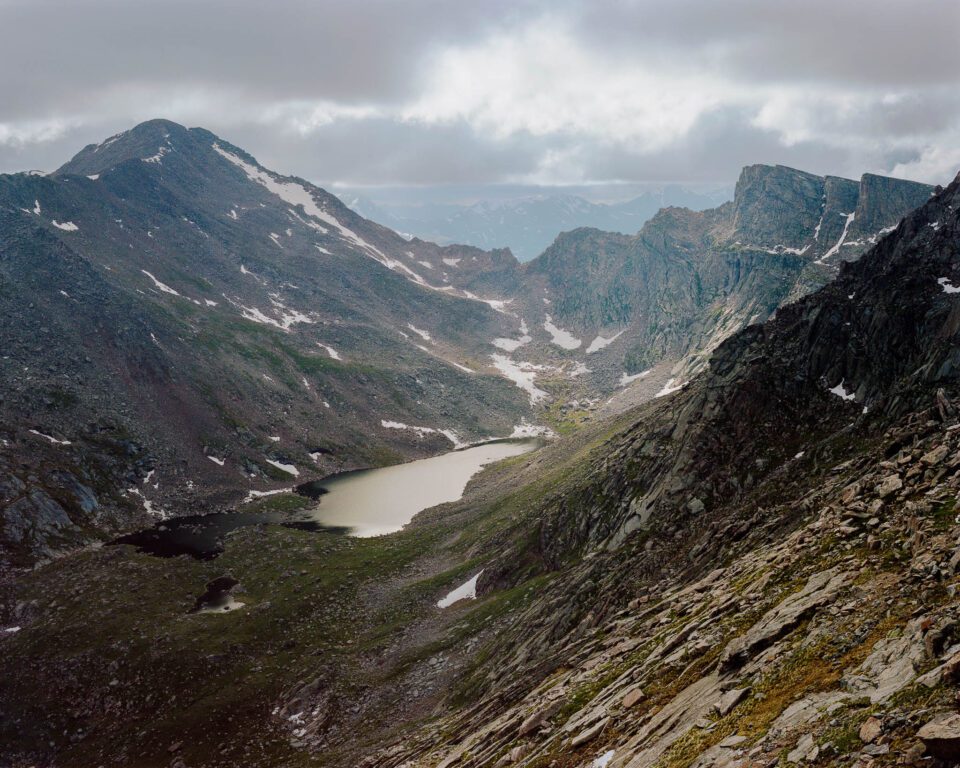 Chamonix 4×5 + Rodenstock Sironar N 150mm f/5.6 @ 1/30, f/22.0, Kodak Portra 160
Chamonix 4×5 + Rodenstock Sironar N 150mm f/5.6 @ 1/30, f/22.0, Kodak Portra 160And this is what I saw on the ground glass:
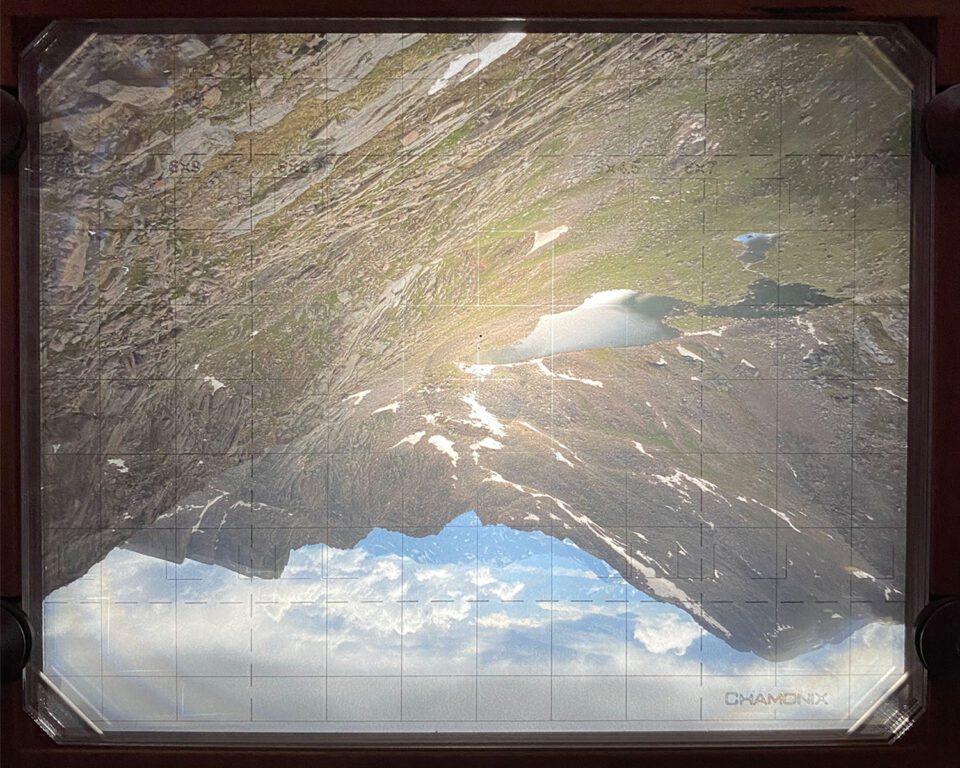 The camera’s view
The camera’s viewTrippy! Up is down; left is right. In concrete terms, a tall mountain to the left of my camera would appear at the bottom right of the ground glass.
Of course, this makes composition harder. Even with a geared tripod head that can adjust pan, tilt, and roll separately, a lot of beginners will struggle to adjust the composition quickly while looking through the ground glass of a view camera. Aim to the left to see more of what’s on the right of the ground glass. Aim up to see more of what’s on the bottom. And tilt clockwise to… tilt the view clockwise. That one stays the same

It’s easy enough to explain why this inversion happens. Lenses – at least, typical ones – always invert the image. It isn’t something that only happens with large format. However, DSLR cameras un-flip this projection when you look through the viewfinder, thanks to the optical path of mirrors and prisms. Mirrorless cameras and LCDs do it with software. (That’s also why a dust speck on the bottom of the camera sensor will appear at the top of your photos.)

The difference is that, in a view camera, there’s no mirror or software to flip the image back to normal when you’re composing it. Instead, you’ll see exactly what the lens is projecting onto the ground glass.
Here’s why I like that.
For starters, composition in photography is sometimes taken too literally. The first instinct of most of us, especially as beginners, is to see something interesting and point the camera at it. The rule of thirds (which I don’t like) is the first time that many photographers will encounter someone saying don’t put the subject in the center all the time.
But composing upside down and backwards means that you’re hardly composing “subjects” at all. Instead, you’re composing unfamiliar shapes and figuring out their relationships. It’s a method of composition that easily focuses on aesthetics and emotional messages rather than simply trying to fit the literal things you see in front of you.
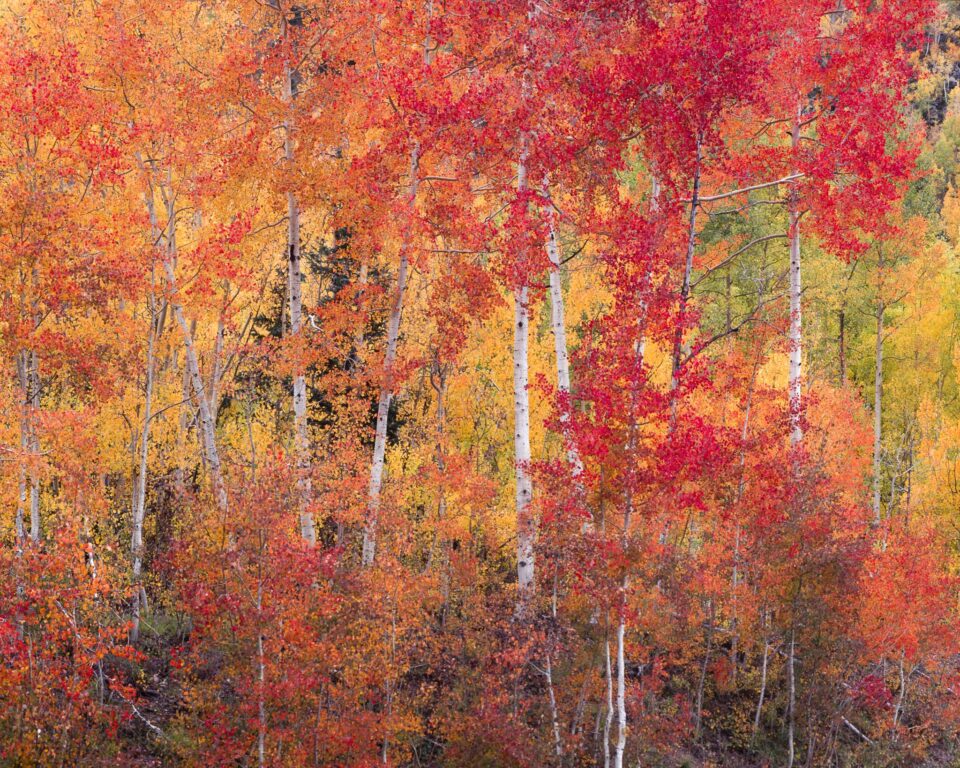 Chamonix 4×5; Nikkor M 300mm f/9 @ f/20, 1/15 second, Kodak E100
Chamonix 4×5; Nikkor M 300mm f/9 @ f/20, 1/15 second, Kodak E100This topsy-turvy process also demands you spend more time per composition. No matter how many large format photos I take, the first moment that I see a backwards, upside-down image on the ground glass is always jarring. It teleports me to a different world. I clear my head, start to understand what’s in front of me, and begin to compose the photo.
The whole thing takes time. And, in my experience, spending time on a composition usually improves it.
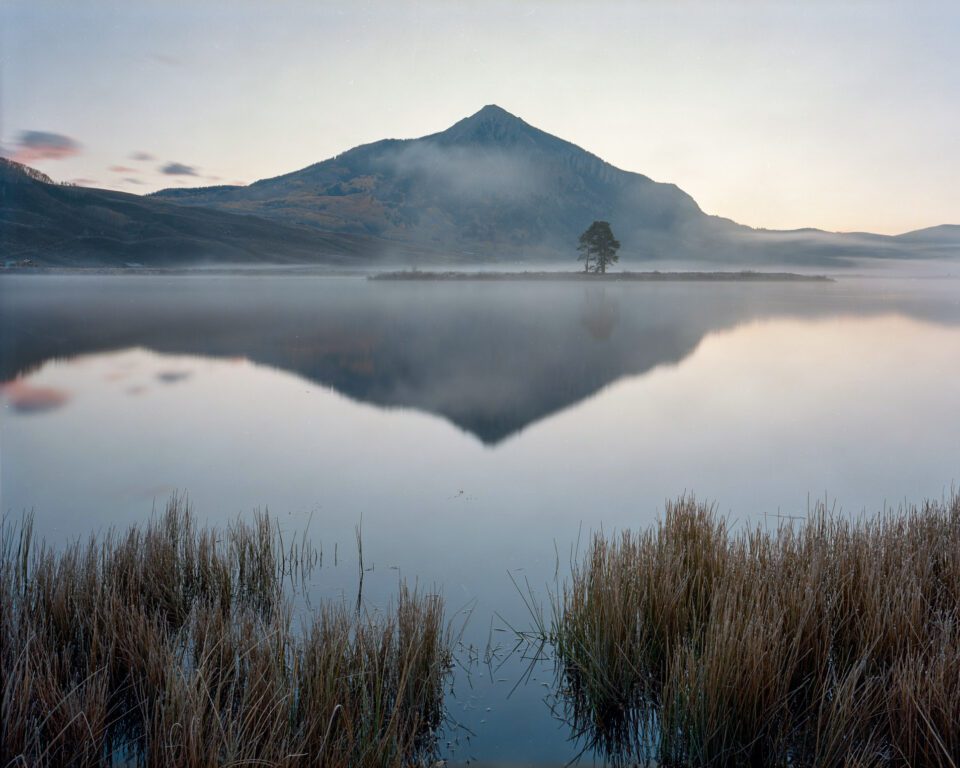 Chamonix 8×10; Fuji 210mm f/5.6 @ f/64, 30 seconds, Kodak Portra 400
Chamonix 8×10; Fuji 210mm f/5.6 @ f/64, 30 seconds, Kodak Portra 400Long before I started shooting with large format film, one of my favorite techniques as a digital photographer was to flip my images horizontally in post-production. I still do it to this day. My goal isn’t to keep the photos this way. Instead, I simply want to see them with fresh eyes – how a new viewer might interpret my work. It’s a way to see and critique my photos anew.
Hence why I don’t think composition is harmed when the image is upside down and backwards. In many ways, the creative process benefits from the inversion.
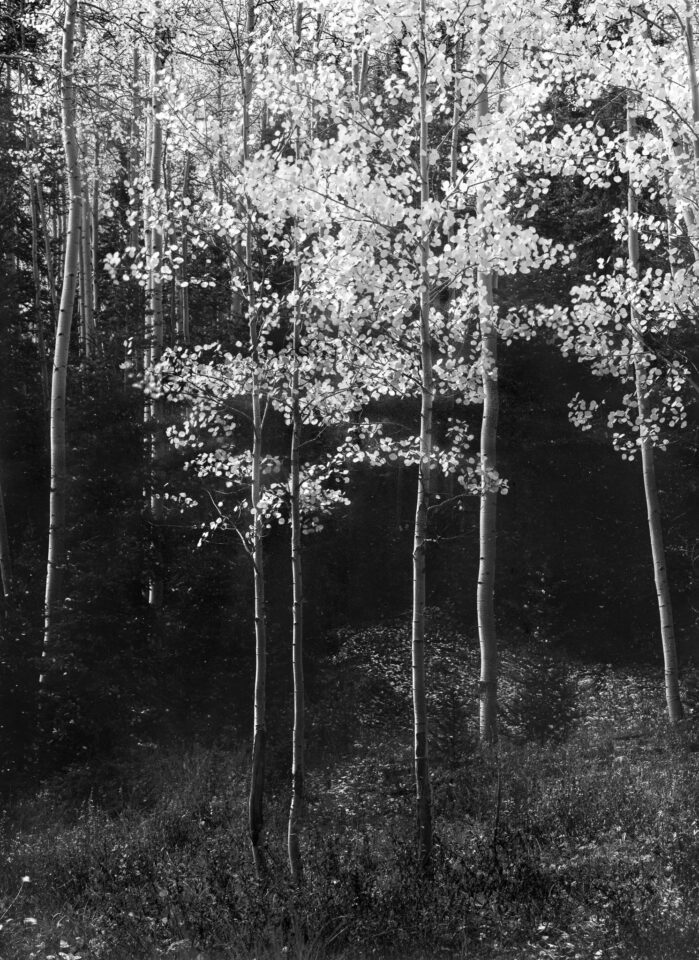 11×14 camera; Goerz Red Dot Artar 30″ @ 762mm, f/90, 8 seconds, Ilford HP5+ 400
11×14 camera; Goerz Red Dot Artar 30″ @ 762mm, f/90, 8 seconds, Ilford HP5+ 400Don’t get me wrong – I’m glad that digital cameras show me things right-side-up when I’m trying to take pictures quickly, like when I do macro or wildlife photography. I also sympathize with some large format photographers who buy reflex viewers to flip the image back to normal – not everyone prefers the jarring nature of upside-down composition.
However, for my style of photography and composition, it’s been an unexpected blessing. And if some camera company added an inverted view as one of the options for the LCD or EVF, I would enable it more often than not, at least for my landscape photos. (Maybe someone already has; I’d be interested if you know.)
 Chamonix 4×5, Nikkor SW 90mm f/8 @ f/30, 1/4 second, Kodak Portra 160
Chamonix 4×5, Nikkor SW 90mm f/8 @ f/30, 1/4 second, Kodak Portra 160In short, it’s easy to think of composition as the simple, mechanical act of pointing your camera at subjects. But no matter what camera you have, if you take one thing away from this article, I’d say to turn that idea on its head! Composition is the most creative and personal part of photography. It’s better to focus on the relationships within the composition, as well as the photo’s emotional message, in order to help it succeed.

تعليق